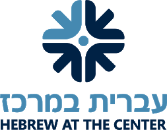Measuring Hebrew Language Achievement
November 30, 2017 by
MILTON’s Hebrew program utilizes an assessment-based curriculum, which means that we first set goals, and then design a curriculum to achieve them. We employ assessments on a school-wide, class-wide, and individual basis. On a daily basis, teachers work to formally and informally assess students’ skills in the classroom as the children work, interact, and engage with the language. Each of our units includes an assessment component within it (measuring progress in each unit from beginning to end), so that we get immediate feedback about what is working and what needs improvement or tweaking.
On the macro level, MILTON has worked with AVANT Assessment to gather data on student achievement in Hebrew language acquisition for the past three years. At the end of the school year, students take an adaptive web-based test that measures reading, writing, listening, and speaking skills in both interpretive and presentational modes of communication. AVANT testing is based on national standards that assesses students’ second language proficiency according to benchmarks based on the ACTFL (American Council on the Teaching of Foreign Languages) Proficiency Guidelines at the Novice, Intermediate, and Advanced levels.
MILTON is committed to reflective practice and making data-informed choices. We use the information from AVANT to assess the school’s Hebrew curriculum and its effectiveness. This includes gleaning information to answer the big questions: Are students learning what we set out for them to learn? Do our graduates leave school with language proficiency consistent with the national norms and consistent with the goals we set for them? Is our program developmentally and cognitively appropriate? Do the content and language skills spiral (connect with previous learning) and widen (advance the learning) as we progress up the grades? Do they spiral at the appropriate intervals and cover the most essential topics for language proficiency? Does the succession of units within each grade and throughout the grade levels indicate that they support each other and build up on each other? Do we see growth in language acquisition and skill from grade to grade?
Over the past few years, we have been making many changes to our units as a result of in-school evaluations, feedback from teachers, and the results from AVANT Assessments. For example, we decided to split the unit on PLACE, which was previously taught in fifth grade and covered the cities of Washington D.C. and Haifa, Israel. Based on the students’ performance, we realized that learning about Washington D.C. at the end of fourth grade would be more consistent with the language constructs and vocabulary of that grade. Additionally, doing so would prepare students to use and transfer language from the D.C. unit to learning about Haifa in fifth grade. We realized it would be beneficial to students to build on a strong base and then cultivate fuller language including new vocabulary and other language expansion when discussing a place they don’t know.
At the grade level, we have been looking at the progress of cohorts to ensure that skills and language development continue to grow from year to year, and at an appropriate pace. We considered different configurations of class make up to determine which is most effective, in addition to thinking about our practice of inclusion as a school. Among the questions we looked at are: What should the makeup of the Hebrew learning group look like? What is the range of levels within a class and how do we adapt and adjust our instruction to answer the various needs in one class? What would be differentiated and what will stay the same? Are there any outliers on both ends of a class that require special attention?
Throughout, we examine the development of the four skills of language; speaking, listening, reading and writing to ensure that each of these skills develops at similar levels. Some differentiation between productive and receptive skills are normal and consistent with language development, but we are mindful to address significant gaps among the different skills by altering unit plans, lesson plans, and instruction in classrooms as needed in order to bridge potential gaps.
AVANT’s measurement tools are used in charting the growth and progress of each student within a year and along their academic careers in MILTON. We look at each individual student’s performance on the AVANT and compare it to their performance in class. Is it consistent with what we know about this student? If there is lack of consistency, we work to understand the reasons behind it, looking at class placement, and considering whether we have to provide support or consider different approaches to Hebrew learning with the child.
Earlier this fall, AVANT VP of Education and Assessment Kyle Ennis visited MILTON to provide faculty and parents with a framework to interpret the information gleaned from the AVANT testing. As he noted, our Hebrew program follows the guidelines of ACTFL (The American Council for the Teaching of Foreign Languages), which rates Hebrew as a level 3 difficulty language because of its separate alphabet system and the structure of the language. This means that it would take longer to achieve a proficiency level in Hebrew as compared to other languages such as Spanish or Italian.
We are happy to share the results from the school-wide AVANT Assessments which were shown during his presentation. In addition, tomorrow, we are mailing each family both the school-wide results along with individual results (and charts to provide context) of the AVANT Hebrew assessment that were administered to students in Grades 3-6 in spring 2017. We will be glad to respond to any question you may have after reviewing the information – please contact Shoshana Sfarzada with any questions.






